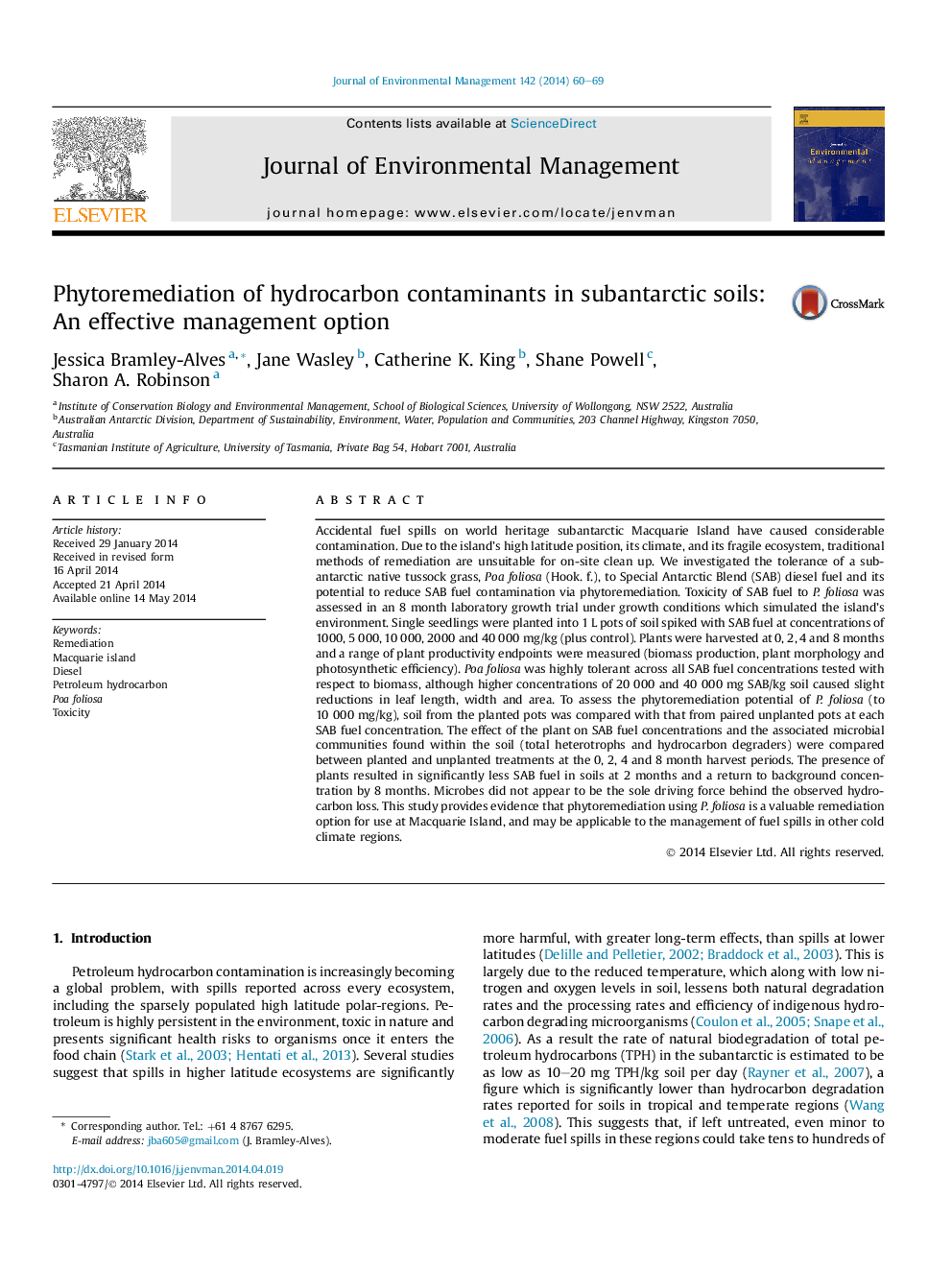| Article ID | Journal | Published Year | Pages | File Type |
|---|---|---|---|---|
| 1055873 | Journal of Environmental Management | 2014 | 10 Pages |
•We investigated phytoremediation of hydrocarbon contaminants in subantarctic soils.•The native grass, Poa foliosa, is tolerant to high levels of soil hydrocarbons.•Planted soils were significantly less polluted when compared to unplanted soil.•We suggest phytoremediation is a valuable management option in this region.•This is the first exploration into phytoremediation using P. foliosa.
Accidental fuel spills on world heritage subantarctic Macquarie Island have caused considerable contamination. Due to the island's high latitude position, its climate, and its fragile ecosystem, traditional methods of remediation are unsuitable for on-site clean up. We investigated the tolerance of a subantarctic native tussock grass, Poa foliosa (Hook. f.), to Special Antarctic Blend (SAB) diesel fuel and its potential to reduce SAB fuel contamination via phytoremediation. Toxicity of SAB fuel to P. foliosa was assessed in an 8 month laboratory growth trial under growth conditions which simulated the island's environment. Single seedlings were planted into 1 L pots of soil spiked with SAB fuel at concentrations of 1000, 5 000, 10 000, 2000 and 40 000 mg/kg (plus control). Plants were harvested at 0, 2, 4 and 8 months and a range of plant productivity endpoints were measured (biomass production, plant morphology and photosynthetic efficiency). Poa foliosa was highly tolerant across all SAB fuel concentrations tested with respect to biomass, although higher concentrations of 20 000 and 40 000 mg SAB/kg soil caused slight reductions in leaf length, width and area. To assess the phytoremediation potential of P. foliosa (to 10 000 mg/kg), soil from the planted pots was compared with that from paired unplanted pots at each SAB fuel concentration. The effect of the plant on SAB fuel concentrations and the associated microbial communities found within the soil (total heterotrophs and hydrocarbon degraders) were compared between planted and unplanted treatments at the 0, 2, 4 and 8 month harvest periods. The presence of plants resulted in significantly less SAB fuel in soils at 2 months and a return to background concentration by 8 months. Microbes did not appear to be the sole driving force behind the observed hydrocarbon loss. This study provides evidence that phytoremediation using P. foliosa is a valuable remediation option for use at Macquarie Island, and may be applicable to the management of fuel spills in other cold climate regions.
